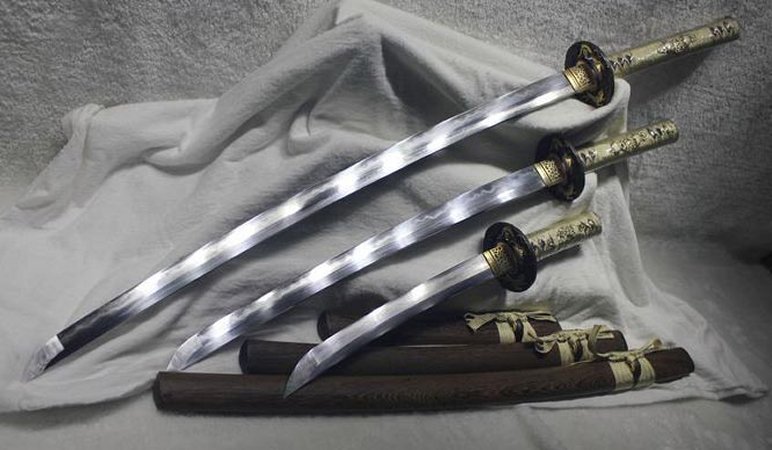Samurai Swords: Katana And Wakizashi And Their Long Tradition
Rafael - AncientPages.com - There are thousands of weapons that have been crafted by man but only a few have acquired the attention and interest of individuals all over the world.
The Samurai swords and especially the Katana are considered the favored weapons of all times. Since the appearance of Japanese swords in popular movies, more people have grown interested in these works of art. Although there were many types of Samurai swords, there were two main blades that were carried by the Samurai, the Katana and the Wakizashi.
Katana swords are very sharp and tough. Image credit: Katanas For Sale
Wearing both swords together is referred to as “Daisho” and the only individuals that were allowed to do so were the Samurai. These Samurai swords symbolized the Samurai social status.
Katana Served In Life And Protected In Afterlife
The Katana was considered a vital part of a Samurai life and many Samurai regarded their sword as an extension of their soul. When a young Samurai was born, a sword would be brought into the bedroom before the birth and this would be his very first Samurai sword.
Also, when the time came for an old Samurai to pass, the blade would be set by his side so he can carry it to the afterlife. Even after death, the Daimyo (a powerful Japanese feudal lord) believed that he could still rely on the Samurai warriors who had served him in life to follow him and protect him in the afterlife.
The Katana sword is described as a single-edged curved blade that features a unique profile, mostly due to the swordsmith and his method of crafting the sword. To qualify as Katana, the blade should be at least 60.6 centimeters (2 Shaku), while the handle should have enough room to accommodate both hands when wielding.
The Wakizashi blade is shorter than the Katana and its blade usually measures 30.3-60.6cm (1-2 Shaku). The Wakizashi was considered very close to the Samurai soul. It was used as a backup sword, when in close quarters and to behead honored enemies after defeating them. Another famous use for the Wakizashi was the ritualistic suicide called seppuku.
The Samurai Katana dates all the way back to the 14th century, yet the most significant period of the Samurai weapons was categorized into four important phases: the Koto, Shinto, Gendai, and the Shinsaku period.
The very first Samurai sword featured a straight, single-edged blade and was called the Chokuto. This sword was based on weapons coming from China; yet by the end of the tenth century, the Japanese developed their own swords with their own special methods.
This resulted in the appearance of military warriors who protected society and eventually became the very first Samurai of Japan.
There were only a few pieces of evidence that exhibited the evolution of the Samurai swords. However, based on numerous Japanese myths, Amakuni is considered as the Father of the Samurai.
The Kamakura And Muromachi Era
The Kamakura (1185-1333) and Muromachi (1336-1573) periods were considered as the most vital eras of the history of Samurai swords. During this time, a large number of invasions occurred in Japan which required a great need for an effective Samurai sword to fend off the invaders and defending the country successfully.
When engaged in battles, the Japanese Samurai realized the difficulty of drawing a straight blade from its scabbard while on a horseback.
Daisho - Only a Samurai was allowed to wear the Katana and Wakizashi. Image credit: Katanas For Sale
Some swordsmiths began crafting arched Samurai blades which were effectively used by cavalry and those were called the Tachi. Due to the design and the efficiency of the sword cutting angles, the Samurai could draw their swords from the scabbard and attack successfully with one hand, even while riding a horse.
Right after the Muromachi period, there were lesser occurrences of invasions and wars in Japan, which greatly diminished the demand for Samurai swords. Other superior weaponry such as guns was also introduced, thus, forcing almost all of the swordsmiths to abandon their work.
The Edo Period
As time passed, the Samurai sword rose to popularity once more when the great emperor Hideyoshi Toyotomi allowed the Samurai class to wield the Samurai swords again. Eventually, there came four hundred years of peace and the Samurai sword eventually became a quality piece of art that represented the long history of the Japanese.
Samurai blades that were crafted during the period were primarily utilized for decorative purposes.
The Edo period (1603 and 1868) also known as Tokugawa period, was also the time when rulers of Japan attempted to regulate the different versions of Samurai swords, as well as the social groups that were allowed to carry these; additionally, it was also the time when the lengths of these Samurai swords were officially set.
End Of The Samurai Era
The year 1876 was the beginning of Japan’s civilization and the samurai warriors and citizens were completely prohibited from carrying swords. This was considered as a dark period especially for remaining swordsmiths since they had to abandon and close down their business.
The Japanese army also had to stop utilizing the Samurai swords and adopted the use of contemporary weapons that came from the West such as the Western-style cavalry blades. After The Second World War, only a few swordsmiths in and outside the country were allowed to produce Samurai swords.
Modern-Day Samurai Swords
Even in this day and age, the Samurai Katana is highly respected and considered as one of the finest swords; yet it is extremely rare to find a smith that can craft a Samurai sword with the passion, heart, and skill of the early swordsmiths.
Katana swords are still adorned by martial arts practitioners and sword collectors. There are various martial arts that make use of the Katana sword, like Iaido and Kenjutsu. The Katana sword continues to carry a strong ceremonial and historical significance.
Written by – Rafael - AncientPages.com Contributor
Copyright © AncientPages.com All rights reserved. This material may not be published, broadcast, rewritten or redistributed in whole or part without the express written permission of AncientPages.com
Expand for referencesMore From Ancient Pages
-
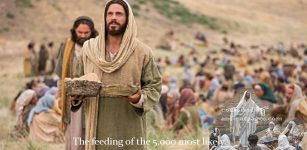 Ancient Entrance Gate Found In Biblical City Of Bethsaida (Zer) Where Jesus Performed His Deeds Of Power
Archaeology | Jul 11, 2018
Ancient Entrance Gate Found In Biblical City Of Bethsaida (Zer) Where Jesus Performed His Deeds Of Power
Archaeology | Jul 11, 2018 -
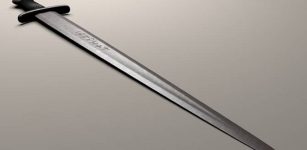 Unravelling The Mystery Of The Ulfberht Sword – An Ancient Viking Artifact Far Ahead Of Its Time
Artifacts | Feb 11, 2014
Unravelling The Mystery Of The Ulfberht Sword – An Ancient Viking Artifact Far Ahead Of Its Time
Artifacts | Feb 11, 2014 -
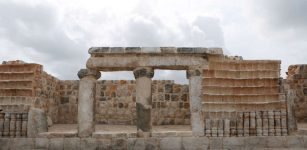 Ancient Mayan City Filled With Palaces, Pyramids And Plazas Discovered On Construction Site In Mexico
Archaeology | May 27, 2022
Ancient Mayan City Filled With Palaces, Pyramids And Plazas Discovered On Construction Site In Mexico
Archaeology | May 27, 2022 -
 Thoth: Ancient Egypt’s Most Mysterious, Highly Venerated God Of Knowledge And Writing
Myths & Legends | May 24, 2017
Thoth: Ancient Egypt’s Most Mysterious, Highly Venerated God Of Knowledge And Writing
Myths & Legends | May 24, 2017 -
 On This Day In History: HMS Challenger Begins Scientific Exploration Of Oceans – On Dec 21, 1872
News | Dec 21, 2016
On This Day In History: HMS Challenger Begins Scientific Exploration Of Oceans – On Dec 21, 1872
News | Dec 21, 2016 -
 Rock-Hewn Burial Shafts And 38 Symbolic Pots Discovered In Abusir Necropolis, Egypt
Archaeology | Feb 6, 2018
Rock-Hewn Burial Shafts And 38 Symbolic Pots Discovered In Abusir Necropolis, Egypt
Archaeology | Feb 6, 2018 -
 Large Mammoth Tusk And Bones Buried For Thousands Of Years Found In North Dakota
News | Jan 8, 2024
Large Mammoth Tusk And Bones Buried For Thousands Of Years Found In North Dakota
News | Jan 8, 2024 -
 New Hope To Finally Find Tomb Of Alexander The Great
Archaeology | Mar 6, 2019
New Hope To Finally Find Tomb Of Alexander The Great
Archaeology | Mar 6, 2019 -
 Extremely Unique Ancient Roman Arm Guard Found At Trimontium Fort – Restored And On Display For The First Time Ever
Archaeology | Jan 22, 2024
Extremely Unique Ancient Roman Arm Guard Found At Trimontium Fort – Restored And On Display For The First Time Ever
Archaeology | Jan 22, 2024 -
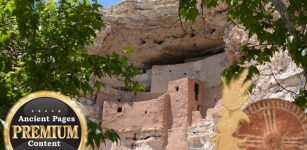 Ancient Mystery Of The American Southwest – Secrets Of The Cliff Dwellers – Part 1
Ancient Mysteries | Jul 23, 2018
Ancient Mystery Of The American Southwest – Secrets Of The Cliff Dwellers – Part 1
Ancient Mysteries | Jul 23, 2018 -
 Vikings Cared Deeply For Their Animal Companions – Shared Human And Horse Burials Reveal
Featured Stories | Aug 3, 2023
Vikings Cared Deeply For Their Animal Companions – Shared Human And Horse Burials Reveal
Featured Stories | Aug 3, 2023 -
 Ancient City Of Metropolis: Ruins With Traces Of The Hittites, Hellenistic, Roman, Byzantine And Ottoman Empires
Archaeology | Jan 8, 2018
Ancient City Of Metropolis: Ruins With Traces Of The Hittites, Hellenistic, Roman, Byzantine And Ottoman Empires
Archaeology | Jan 8, 2018 -
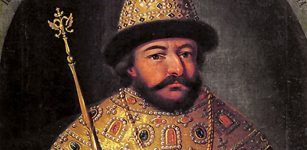 Controversial Ruler Tsar Boris Godunov’s Exact Date Of Birth Determined By Scientists
Archaeology | Aug 31, 2021
Controversial Ruler Tsar Boris Godunov’s Exact Date Of Birth Determined By Scientists
Archaeology | Aug 31, 2021 -
 Strange Desert Castle Qasr Kharana In Jordan
Featured Stories | Oct 1, 2019
Strange Desert Castle Qasr Kharana In Jordan
Featured Stories | Oct 1, 2019 -
 Maya Storm God Huracán Taught That When We Damage Nature, We Damage Ourselves
Featured Stories | Oct 4, 2024
Maya Storm God Huracán Taught That When We Damage Nature, We Damage Ourselves
Featured Stories | Oct 4, 2024 -
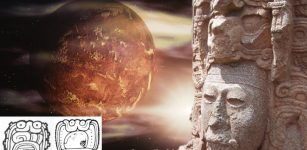 Mysterious Ancient Maya ‘Star War’ Glyph And Its Possible Connection To Venus
Archaeoastronomy | Feb 20, 2019
Mysterious Ancient Maya ‘Star War’ Glyph And Its Possible Connection To Venus
Archaeoastronomy | Feb 20, 2019 -
 Rare Statue With A Ka Symbol And A Dwarf Sphinx Discovered In Egypt
Archaeology | Dec 18, 2019
Rare Statue With A Ka Symbol And A Dwarf Sphinx Discovered In Egypt
Archaeology | Dec 18, 2019 -
 DNA Reveals Unique Ancestry Of Inhabitants Of The Angolan Namib Desert
DNA | Oct 3, 2023
DNA Reveals Unique Ancestry Of Inhabitants Of The Angolan Namib Desert
DNA | Oct 3, 2023 -
 Unexplained Encounters With A Mysterious Being In South Dakota Reported – Why Is This Happening?
Featured Stories | Jul 9, 2024
Unexplained Encounters With A Mysterious Being In South Dakota Reported – Why Is This Happening?
Featured Stories | Jul 9, 2024 -
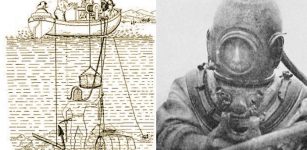 On This Day In History: Practical Underwater Diving Suit Patented By Maine Inventor – On June 14, 1834
News | Jun 14, 2016
On This Day In History: Practical Underwater Diving Suit Patented By Maine Inventor – On June 14, 1834
News | Jun 14, 2016

